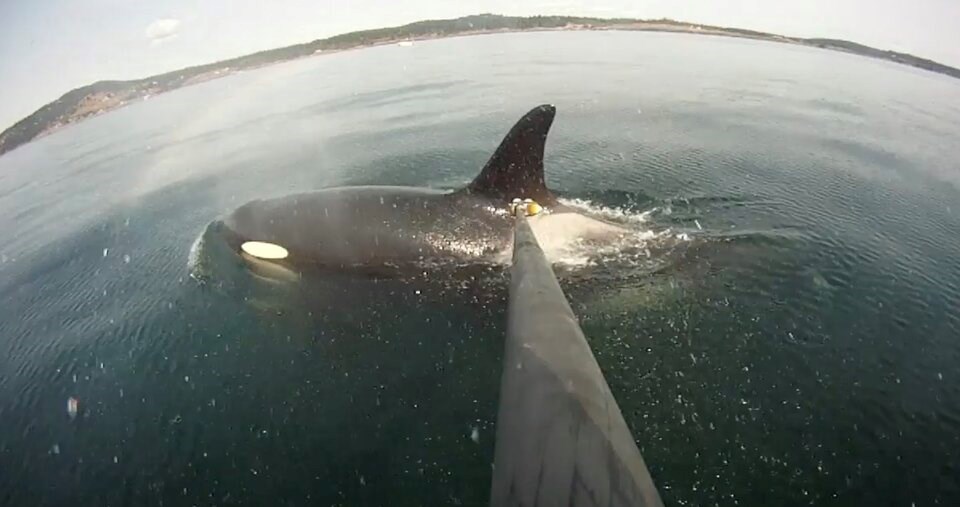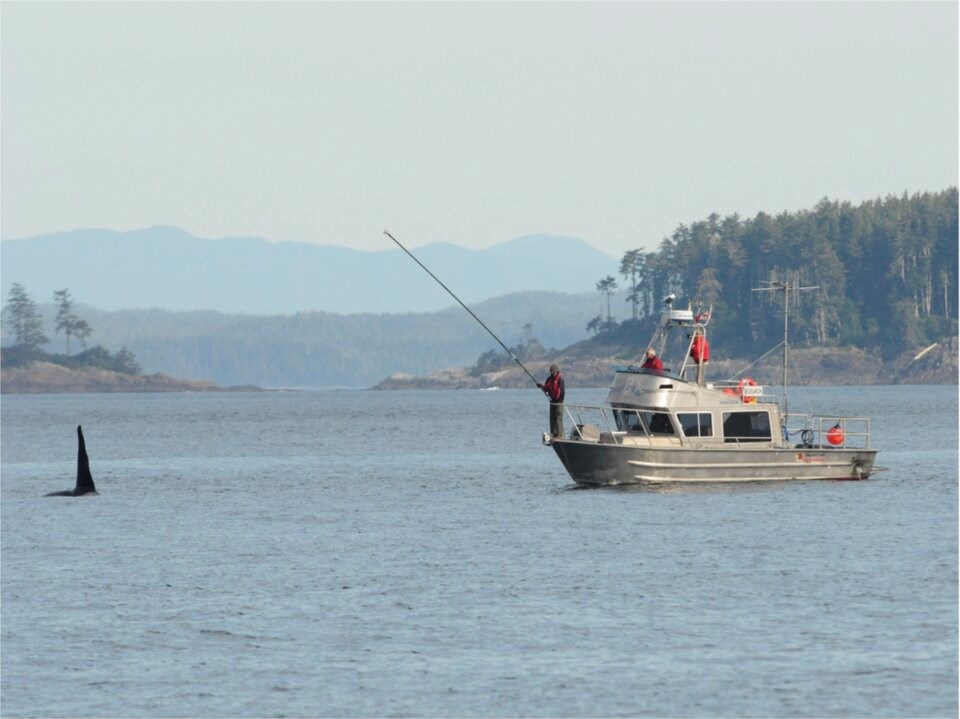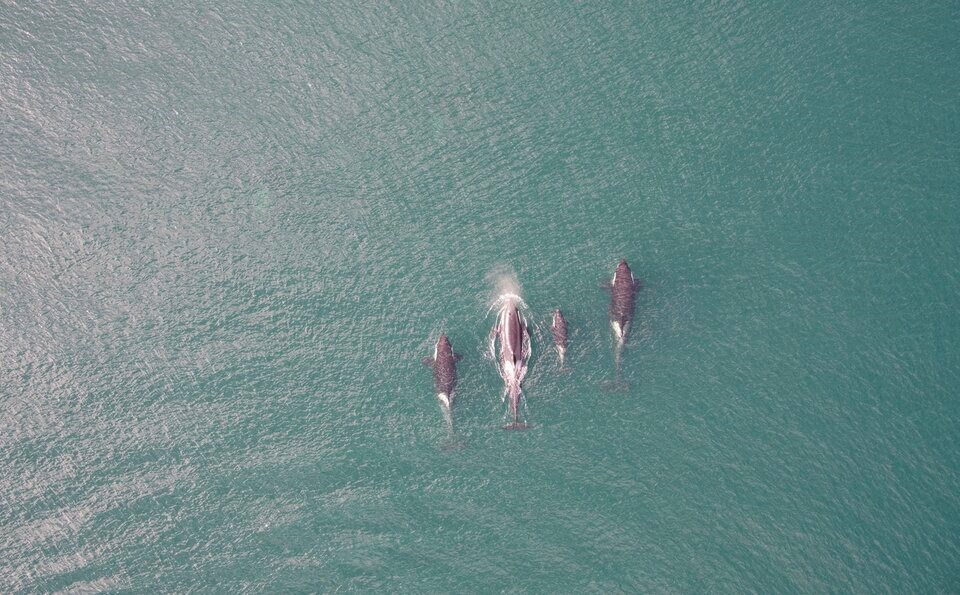The benefits of paying attention to breathing have long been touted by everyone from doctors to yoga instructors. But what if that applied to other species?
In a recent study published in the , researchers from the University of British Columbia used drones and animal-tracking tags to observe when, how and how often killer whale populations off the province’s coast breathe.
The study found the whales’ dives lasted from a few seconds to a maximum 8.5 minutes. More importantly, the researchers confirmed a sneaking suspicion: Active killer whales breathe only once every time they surface.
“Killer whales are like sprinters who don’t have the marathon endurance of blue and humpback whales to make deep and prolonged dives,” co-author Andrew Trites, professor in the UС����Ƶ Institute for the Oceans and Fisheries, said in a statement.
Tess McRae, the study’s first author and a master’s student at the University of С����Ƶ’s Marine Mammal Research Unit, said learning how much oxygen whales take in as they go about their day can be used to understand the animals’ metabolism.
“It’s really important for us to try to figure out how much energy they’re using, and then on the flip side of that, how much food they really need,” McRae said.

С����Ƶ’s northern resident killer whale population has tripled since the 1970s, now numbering over 300 individuals. But travel toward the U.S.-Canada border and over that same period, their southern cousins have languished at 75, a number that has barely changed since live capture ended 40 years ago.
Some studies have found in the southern population’s fatty layers. Research has also looked at the impact of and how underwater sounds from industrial activity and could be messing with their navigation.
One of the most active areas of current research is assessing whether the whales are — the southern residents’ preferred food.
That’s where measuring whale breaths comes in.
Fitbit for whales finally calibrated for breathing
Data for the study came from August 2020, when researchers tracked 11 northern and southern resident killer whales in the Queen Charlotte Sound, Queen Charlotte Strait, Johnston Strait, and Juan de Fuca Strait.
At the time, each whale was tagged with a suction-cupped D-tag, or “Fitbit for whales,” as some researchers put it. They collected video, sound and underwater movement data with tri-axial accelerometers, magnetometers and gyroscopes. From the air, a drone pilot from the Hakai Institute monitored the whales as they surfaced for a breath.
The combined monitoring offered scientists a “whole picture view of what the whales were doing,” said McRae, who started the work as an undergraduate at UС����Ƶ.
There was only one problem: Of the 8,100 dives that had tag data, only slightly more than 500 had matching drone footage. Turning to the UС����Ƶ Department of Statistics, the researchers said they used a lot of math to predict the behaviour and breathing rates where they didn’t have drone footage.

McRae, who spent hours logging and classifying that footage, said she never got tired of watching the animals approach the surface, breach and send a cloud of mist from their blowhole.
In the end, that work paid off, said co-author Beth Volpov, a postdoctoral researcher at UС����Ƶ’s Marine Mammal Research Unit — who, hailing from Kansas, says she “followed the orcas up to Vancouver and never left.”
Volpov said learning the killer whales take one breath per surface interval is extremely helpful to get the most out of their underwater trackers. While they were first deployed in the 1970s, it was never clear whether the so-called whale Fitbits were properly calibrated for breathing — until now.
“When you wear your Fitbit, it uses a mathematical equation and it predicts how many calories you’re burning,” she said of the human variety. “And so it’s kind of like we just did that for the whales.”
Compared to humans, who often take 40 to 60 breaths a minute while exercising, killer whales in the study took fewer than two breaths a minute while travelling or hunting, said Volpov.
Another curious fact: The researchers found fish-eating killer whales spend about 25 per cent of their time feeding, about four times more than the 91 minutes the average Canadian spends dining every day, according to .

How much fish do С����Ƶ's killer whales actually need?
Volpov says the next step is to understand how many calories a whale burns every day, and then how many salmon they need to stabilize and expand the population. But that can be tricky. Whales come in all shapes and sizes, and it’s not clear how many calories an average chinook salmon provides at different times of year.
“It’s like the difference between eating a Big Mac or celery, right? Like when they eat the fish, how many calories are they actually getting?” Volpov said.
Account for those variables and Volpov says scientists will get even closer to helping governments make evidence-based decisions on how best to protect fish stocks and the predators that rely on them.
“That’s what we’re working on right now,” she said. “We haven’t figured it out yet.”
For McRae, the whole experience has reinforced the idea that complex science and meaningful conservation can start with observation — and something as simple as counting breaths.




